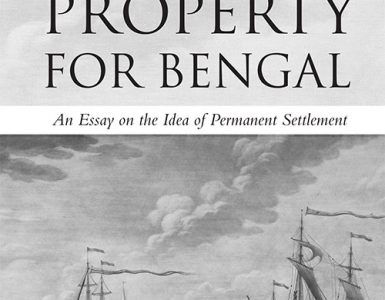Fiona Williams
There are not many books on economic theory that I have found exciting to read. Peo Hansen’s meticulous development of A Modern Migration Theory is an exception and is exceptional. It is based on modern monetary theory which asserts the vital role that public debt can play in generating the economy. Hansen uses this theory to dismantle, brick by brick, a pernicious common-sense that has become the defence/attack of European national and supranational governments, academics and media of all political colours: that labour migrants and refugees constitute a net cost and fiscal burden on the public purse.
Not only has this apparent logic legitimated dehumanizing restrictions to the social and mobility rights of migrants and refugees, but it is wrong, based, as it is, on a conception of the economy as system of balanced household accounts.
There is much to applaud in this refreshing analysis. The arguments deepen postcolonial and decolonial welfare state analyses and have the potential to move anti-racist and human rights politics from back to front foot. Here, I highlight those aspects that have resonance for my work on race, gender and class in the development of welfare states, particularly the British welfare state (Williams, 1989, 1995, 2021).
Hansen’s analysis of EU migration and refugee politics contributes a large and missing piece of the jigsaw which is about the power of ‘sound finance’ thinking to shift (or shape shift) social policy and migration regimes in its witting and unwitting complicity with xenophobic politics. He shows how, from the 1980s onwards, EU policies for asylum seekers, refugees, internal and external labour migrants became more complex and fragmented, with different rights and restrictions placed on differently placed groups.
… restrictions reduced the access of all groups to welfare, permanent residence, and family reunification and were accompanied by greater policing and securitization
These restrictions reduced the access of all groups to welfare, permanent residence, and family reunification and were accompanied by greater policing and securitization. Alongside this, policies reiterated the need for migrants to fill labour shortages and balance the ageing demographic deficit, while also claiming it necessary to reduce refugee numbers. Underpinning these contradictory developments, Hansen argues, is repeated capitulation to ‘sound finance’ – the argument no-one can or will refute – that migrants, but especially refugees, place a burden on welfare provision and create political instability. So let some of them in, but restrict their access to welfare and settlement.
These developments are mirrored in Britain in particular ways. My analysis links the increasing restrictions to migrants’ rights at the borders (the ‘racialized crisis of borders’ – Williams, 2021) to the dehumanizing restrictions to entitlements within those national borders. The 1999 Asylum Act, while part of the racist restrictive logic of immigration policy since the 1960s, began the erosion of economic and social rights of asylum seekers with the routine use of detention centres and the replacement of cash benefits with vouchers. What it set in train was a template for restrictive and conditional practices and technologies to degrade the welfare rights of different marginalized and minority groups within national borders in the service of an austerity welfare programme.
These ‘bordering practices’ (Guentner et al., 2016; Yuval-Davis et al, 2019; Williams, 2021) involve, among other things, bureaucratic constructions of complex and often changing categories of migrant and welfare subject statuses. These then serve as rationale and/or condition for removing a right or access to services such as housing or health care. The Welfare Reform Act of 2010 exemplifies how access to benefits became heavily conditionalized and penalized. Differentiated levels of conditionality and reductions in social rights to citizens and migrants created similarities between the two groups while increasing inequalities among and between them.
Margaret Thatcher famously represented her neoliberal welfare strategy of the 1980s as the exercise of the prudent housewife.
Austerity policies included cuts to public services and followed in the wake of the financial crisis. They found legitimation in part through a common-sense of ‘fiscal realism’ (or ‘sound finance’). David Cameron, Prime Minister of the Coalition government extended to everyone, in the spirit of ‘fairness’, the responsibility to help ‘deal with the debt’ and ‘turn the economy around’. Such fiscal realism has a long pedigree. Margaret Thatcher famously represented her neoliberal welfare strategy of the 1980s as the exercise of the prudent housewife.
In 2010 Cameron introduced a further twist. ‘The real issue’, he argued, ‘is this: migrants are filling gaps in the labour market left wide open by a welfare system that for years has paid British people not to work’ (cited in Williams, 2021: 87). Reducing the debt, he said, demanded a twin strategy: reducing ‘welfare dependency’ and reducing immigration were ‘two sides of the same coin’. Such doublespeak pursued its logic into the ethno-nationalist welfare populism of the Brexit campaign.
Part of Peo Hansen’s critique of sound finance is that its misconception of deficits precludes an appreciation of the beneficial social, demographic and economic contributions of migration. He exemplifies this brilliantly with a study of the economic dynamics that resulted from government financial support given to Swedish municipalities to develop infrastructure for the reception and settlement of refugees during 2015-17. More generally he points to the contribution of migrant labour to European health and social care systems without which they would collapse. This is an important argument, but I want to unsettle the notion of contribution.
My research focuses on the contradictory forms of dependence of welfare states upon migrant and minority ethnic labour, which, over changing colonial, post/neo-colonial formations, is demanded yet subjected to racist rhetoric and social controls. It finds that the contribution of this labour comes at significant social, economic and personal costs to those workers which result from deep racialized and gendered social, economic and geo-political inequalities; that while contributing to the sustainability of welfare provision, this labour is used to maintain lower social expenditure costs and white economic and social privileges; and that these issues need to be placed in the geo-political relationship between migrants’ countries of origin and destination. The contribution of female migrant workers to the post-war British welfare state and the welfare state in this century illustrates these points.
The introduction of the British welfare state in 1945 juggled with two problems: labour shortages and the ‘quantity and quality’ of the population. Granting citizenship to people from British colonies and former colonies eased the first, even though parliamentary committees wrung their hands at the consequences of ‘alien cultures’ such that Aneurin Bevan reassured Parliament in 1949 that he would ensure that the NHS was not subject to ‘abuse’ by foreigners. Population decline was met by measures that supported women’s contribution to the nation as housewives and mothers, but not as workers.
Population decline was met by measures that supported women’s contribution to the nation as housewives and mothers, but not as workers.
The new Commonwealth immigrants were recruited to work in the health service or build council housing yet their access to these services was routinely questioned or denied. Commonwealth women workers filled those jobs which otherwise would have had to be filled by British married women. They contributed not only to the construction of the welfare state but to the social reproduction of the white male breadwinner family at cost to their own family lives: they were seen to fail as mothers because of their contribution as workers.
Fast-forward fifty years and the new normative ideal/necessity in western welfare states is of a dual earner family. By the 1990s, domestic service for professional dual-earner families increasingly became the norm. Ageing societies, declining fertility, and relatively unchanged gendered care responsibilities have combined with political imperatives to keep care costs down and created a demand for low-cost care labour. It is migrant women from the poorer regions, often educated and skilled and under pressure as main breadwinners, who are meeting this demand in many, if not most, countries of the developed world (Williams, 2018). Once again, these workers provide cost effective solutions to securing the family norms and care needs in their countries of destination. But is this a solution for those migrant care workers?
There is not space to go into the reasons behind women’s migration, but I highlight three points. First, care and domestic work historically are undervalued as women’s work – temporary, part-time, precarious, low waged, insecure, flexible, and without collective organization (in spite of historic victories by transnational domestic worker organizations to improve working conditions). Restrictive migration policies for unskilled workers have exacerbated this precarity. Second, such work by migrant women plays into colonial and post-colonial tropes of racialized servitude and empirical work demonstrates how those social relations of power underpin much of the work today (Sahraoui, 2019). Third, while orthodox development economists claim that migrants’ remittances represent a ‘triple-win’ for countries of origin, destination, and the families of migrant workers, it is more complex.
Remittances amounted in 2019 to three times the total of overseas aid. They are indeed a vital resource for migrant workers’ families to pay for education and housing. But for many countries of origin who encourage the emigration of health and care workers as a source of foreign currency, this is a strategy resulting from structural adjustment policies and IMF loans which have increased their foreign debt. There is no guarantee that remittances will be used to develop the social and economic infrastructure which might provide employment and encourage workers to stay. Destination countries are the winners: they receive trained workers and familial care at poorer countries’ expense (Withers, 2019).
This example raises the question of how, in addition to having an alternative economic approach to migration, we need to connect this to strategies for both historical and contemporary geo-political reparation. (Some countries offer recompense for the recruitment of skilled health care workers, but no agreements exist for care work). More generally, migrant care work stands at the intersection of global failures in migration governance and a global care crisis in which the demands of contemporary capitalist productivism have undermined, devalued and depleted individuals’ and societies’ capacities to care.
Alternative economic strategies to address the care crisis, in common with those addressing the climate crisis, spell the end of homo economicus. Instead, they prioritize care, interdependence and human and planetary well-being over maximizing economic growth. The Covid-19 pandemic revealed how, in extremis, old economic models and deficit anxiety could be overcome. It exposed deep inequalities and the dependence of health and social care systems on migrant and minority ethnic workers, many of whom were also to lose their lives. It also provides the opportunity for both transformative thinking and transformative action in which Peo Hansen’s theory should be an essential element.

Fiona Williams is Emeritus Professor of Social Policy at the University of Leeds, Honorary Professor at the Social Policy Research Unit, University of New South Wales, Australia, and Research Affiliate at COMPAS (Centre on Migration, Policy and Society) at the University of Oxford. Many of these arguments are developed in her forthcoming book, Social Policy. A Critical and Intersectional Analysis, due out in July 2021.
Header Image Credit: bruno kvot
References
- Guentner, S. et al. (2016) ‘Bordering practices in the UK welfare system’, Critical Social Policy, 36(3): 391–411. https://doi.org/10.1177/0261018315622609
- Hansen, P. (2021) A Modern Migration Theory. An Alternative Economic Approach to Failed EU Policy. Newcastle: Agenda Publishing.
- Sahraoui, N. (2019) From Care Labour to Care Ethics: Exploring Racialised Workers’ Experiences in European Older-Age Care. Basingstoke: Palgrave
- Williams, F. (1989) Social Policy: A Critical Introduction: Issues of Race, Gender and Class. Cambridge: Polity.
- Williams, F. (1995) ‘Race, ethnicity, gender and class in welfare states: a framework for comparative analysis’, Social Politics: International Studies in Gender, State and Society, 2(1): 127–59. https://doi.org/10.1093/sp/2.2.127
- Williams, F. (2018) ‘Care: intersections of scales, inequalities, and crises’, Current Sociology, 66(4): 547–61. https://doi.org/10.1177/0011392118765206
- Williams, F. (2021) Social Policy. A Critical and Intersectional Analysis. Cambridge: Polity. (out in July 2021).
- Withers, M. (2019) ‘Temporary labour migration and underdevelopment in Sri Lanka: the limits of remittance capital’, Migration and Development, 8(3): 418–36. https://doi.org/10.1080/21632324.2019.1568701
- Yuval-Davis, N.et al. (2019) Bordering. Cambridge: Polity.
TO CITE THIS ARTICLE:
Williams, Fiona 2021. ‘Modern Migration and the Inequalities of Gender and Care’ Discover Society: New Series 1 (1) https://doi.org/10.51428/dsoc.2021.01.0004




